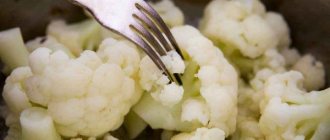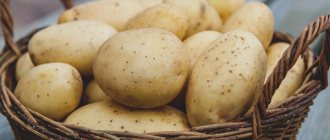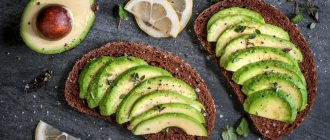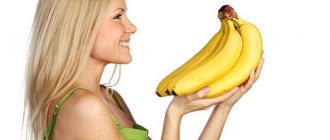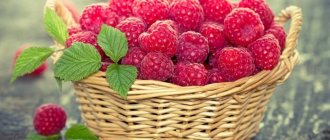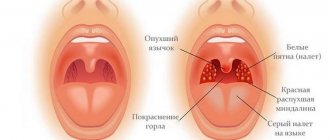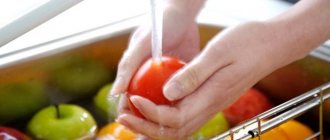Almost every diet that is based on the principles of proper nutrition includes nuts.
Today we will figure out whether pistachios can be consumed while breastfeeding, because this particular type of product is considered one of the most delicious and nutritious. We will also take a detailed look at the beneficial properties of these nuts and talk about possible side effects of consuming them.
Of course, pistachios are an approved product during lactation, and pediatricians often even recommend adding them specifically to your diet. True, a young mother will be able to treat herself to this delicacy only when the child reaches six months of age. We will talk in detail about the reasons for this below.
Now let's thoroughly study the beneficial properties of these nuts. It should be noted that nutritionists consider pistachios to be one of the healthiest nuts and there are several reasons for this.
- These nuts contain large amounts of unsaturated fatty acids
. These compounds are incredibly beneficial for the human body. Such substances have the most beneficial effect on the cardiovascular system. Thanks to such acids, cholesterol levels in the blood are reduced, and the walls of blood vessels are strengthened. Additionally, blood pressure is normalized. - Pistachios are an excellent source of antioxidants
- the amount of them in these nuts is comparable to the amount contained in green tea leaves. These substances do an excellent job of searching for and neutralizing free radicals, and also participate in the process of removing harmful compounds from the body. In addition, antioxidants help activate regenerative processes inside cells. - Almost all young mothers know that breastfeeding is associated with some depletion of the body - the body sends all its reserves of nutrients into milk, which is why there is a deficiency in it. Pistachios are rich in both vitamins and vital minerals
, which helps restore reserves and normalize many internal processes. - The same presence of a large amount of vitamins has a beneficial effect on the condition of the hair and skin of a young mother. Many women suffer from the fact that during breastfeeding their hair becomes thinner and more brittle, and their skin loses its elasticity. Eating pistachios in moderation solves these problems.
- Calcium, which is part of pistachios, has a beneficial effect on the condition of teeth and nails
. Thanks to this microelement, bone tissue is strengthened. A small amount of calcium also enters the baby’s body through breast milk - in the first year of life, the child’s skeleton grows most rapidly, and therefore the need for this mineral is incredibly high. - Pistachios are the record holder for vegetable protein content
- per 100 grams of product there are about 20 grams of proteins saturated with essential amino acids. Protein is, in fact, a building material for many systems in the baby’s body, and therefore the consumption of high-protein foods during lactation is very important. - Pistachios contain a significant amount of fiber
. These plant fibers help improve digestion and promote better functioning of the gastrointestinal tract. - Everyone knows that nuts are saturated with fat
, which is why the calorie content of such a product is quite high. Surprisingly, despite this, pistachios can help you lose weight. Recent studies have shown that eating these nuts is several times safer for your figure than snacking on crackers or other snacks.
Possible harm of pistachios for a nursing mother
The properties listed above make pistachios an incredibly healthy product, however, with excessive consumption and some other conditions, these nuts can harm the body of a young mother and baby.
- Typically, these nuts are presented in stores in salted form. Excess salt, and with it sodium, in the body leads to increased blood pressure. Salt also retains fluid in the body, which causes swelling in the young mother and disrupts the water-salt balance.
- Pistachios, like other nuts, can cause allergies, both in mother and baby. It usually manifests itself in the appearance of redness on the skin and digestive problems. If you notice that your baby's bowel movements have changed after eating pistachios, or your child suffers from colic, it is recommended to immediately eliminate them from your diet.
- Of course, pistachios help a young mother lose weight, but this effect is achieved only when eaten in moderation. If a nursing mother abuses this delicacy, this invariably leads to excess weight, since the calorie content of nuts is as much as 570 kcal per 100 grams of pure product.
- Pistachios contain large amounts of potassium. If there is an excess of this element, a young mother may experience kidney problems. High levels of potassium in the body are accompanied by nausea, heart palpitations, and dehydration.
- Pistachios also contain manganese, which is undoubtedly beneficial, but if there is an excess of it in the body, a young mother may experience convulsions, tremors of the limbs and neurological disorders.
- Too much fiber can have the opposite effect and lead to digestive problems. It is usually accompanied by diarrhea, cramps and abdominal pain.
Can I eat pistachios while breastfeeding?
Many points regarding the nutrition of breastfeeding women are controversial. This also applies to the issue of eating pistachios.
Nuts contain many healthy fats that can improve the quality of breast milk.
It was previously mentioned that pistachios, like most other nuts, are allergenic foods. Therefore, it is quite risky to introduce them into the baby’s diet in the first months of the baby’s life.
Allergens enter the mother's blood and breast milk. This is how dangerous substances enter the baby’s body. In order to eat pistachios without harming the child’s health, it is necessary to find the right solution in the procedure for introducing the product into a woman’s diet.
If you are sure that nuts can cause an allergic reaction in your baby, then you do not need to eat them in the first months of his life. After 5 months, you can introduce the product in very small portions, while observing the baby’s reaction.
You can find out in our article whether you can eat pine nuts while breastfeeding.
Can a nursing mother eat almonds? Read here.
Is it possible for a nursing mother to eat kiwi? Read the link https://klubmama.ru/grudnoe-vskarmlivanie/mozhno-li-kivi-kormyashhej-mame.html
How many pistachios can you eat during breastfeeding and when should they be introduced into the diet?
In order to protect yourself as much as possible from side effects, you must follow a number of recommendations.
A young mother can try to introduce pistachios into her diet for the first time only when the child is six months old.
This is due to the fact that until six months of age, the baby’s digestive system is not yet fully formed and even a small amount of a new product can cause an allergic reaction or digestive problems.
First, you should try eating a small handful of pistachios and monitor the baby’s reaction for 1-2 days. If there is no redness on his skin and his stool maintains its consistency, then you can slightly increase the number of nuts you eat per day.
The maximum allowed intake is no more than 100 grams of pistachios per day, and it is advisable to divide this volume into 2-3 doses. Pediatricians recommend eating nuts not every day, but with an interval of 1-2 days, so you can eat 300-400 grams of the product per week.
Recommendations for consuming pistachios during lactation
- Be sure to purchase pistachios that have been heat-treated. Raw food may contain salmonella spores, which can cause food poisoning.
- It is better to buy nuts in vacuum packaging rather than in bulk, so you are guaranteed to receive a quality product.
- Eat only open pistachios - this indicates the ripeness of the seed.
- Use salted pistachios with caution if you have any kidney problems or suffer from edema. The most useful product is the one that has not undergone salt treatment at all.
So, can you eat pistachios while breastfeeding? Undoubtedly, this product can be included in the diet of nursing mothers, but it will only be useful if the young mother observes moderation in its use.
Who among us doesn’t love pistachios - tasty, nutritious and very nutritious! These nuts contain a lot of microelements - potassium, copper, manganese, phosphorus, magnesium. This product is also considered a leader in the content of phytosterols - substances that are extremely beneficial for blood vessels. Pistachios are rich in amino acids and B vitamins. These nuts effectively reduce the level of bad cholesterol in our blood and work as antioxidants. And the main feature of pistachios is their essential oils, thanks to which they are called “nuts of a good mood.” Well, let's find out where, in what country, pistachio nuts grow, which are so beneficial for the human body.
In what country do pistachios grow?
The distribution area of pistachios is the tropics and subtropics. These are mainly the mountains of Central Asia, Mesopotamia, Syria, and North-Eastern Iran. But in other countries, in particular in the Mediterranean (Italy, Spain), pistachios are grown as a cultivated plant, both for export and for domestic consumption. But the leader in growing pistachios is, of course, Turkey - it owns more than 50% of the world market share in pistachio sales.
These nuts are gradually grown in Australia, North-West Africa, and Israel. But do pistachios grow in Russia, and if so, where? To answer this question, let's first learn some features of agricultural technology when growing this crop.
Pistachio trees prefer rocky, stony soils and grow well in desert conditions. They live on slopes and cliffs, preferring mountain-steppe brown soils and gray soils. They are most often found on soils rich in calcium, which they actively absorb. And pistachios are most likely to grow where they can satisfy their need for good lighting. This plant is drought-resistant and at the same time can withstand frosts down to -25°C, so it thrives in deserts and semi-deserts.
So, climatic conditions and soil suitable for growing pistachios are available on the Black Sea coast of the Caucasus Mountains, as well as in the south of Crimea. However, the taste of nuts obtained from local trees is far from ideal, so only amateur gardeners grow pistachios in the country.
If you have a desire to cultivate pistachios on your own plot, know: they will begin to bear fruit no earlier than in 9-10 years, and the peak yield occurs at approximately 20 years of age of the tree. Keep in mind that your garden must have at least two trees of different sexes.
How do pistachios grow?
Pistachios are called not only the nuts themselves, but also the trees on which they grow. Depending on the variety, these are deciduous or evergreen trees, and sometimes shrubs from the sumac family. Most specimens reach a height of 5-6 m, and pistachios live up to 400 years! These long-lived desert flora also look unusual: a low, dense crown crowns a multi-stemmed base covered with inconspicuous gray bark. There are several interesting facts associated with the cultivation of pistachios. For example, these trees most often grow alone, and only occasionally form sparse forests. Pistachio trees are divided into males and females, and they reproduce through cross-pollination. And not everyone knows that pistachios are not nuts at all from a botanical point of view, but only seeds.
The foliage of a pistachio tree, when exposed to direct sunlight, releases a large amount of essential oils, so for a person, being near such a plant on a hot afternoon is fraught with headache and fainting.
Few people know where pistachios grow, but many have tried these delicious nuts. Today “I and the World” will answer this question and some others, and most importantly, you will find out why they are useful.
Cultivation
What is a pistachio, do these nuts grow on a tree or on the ground? It is a low, evergreen tree, common in Asia and northwest Africa. These plants can be found both in the central part and in. Delicious nuts are exported to Greece, Spain, Italy, and Turkey. It is the latter country that is considered the leader in the production and sale of pistachio nuts.
In Russia, the climate does not allow growing pistachios, but there are places where you can try it. In Crimea, the weather is more favorable for the growth of nuts and the first seedlings were planted back in the 18th century. But it turned out that they were unsuitable for food, so they began to be used to make cosmetic oils. But some wild trees grow in the former Soviet republics - Tajikistan, Uzbekistan, Turkmenistan, Kyrgyzstan. The tree can tolerate frosts down to -30-35 degrees, but the summer must be long and dry.
Where are pistachio nuts grown and on what tree is it clear, but how do they grow?
Description of the tree
It is difficult to encounter a whole forest of nut brethren in the wild, because they grow mostly separately from each other, tightly clinging to the ground with long roots. Pistachio grows well on mountain slopes, anchored by such tenacious “fingers”. Still would! They can stretch to the sides for 30-40 meters, and go 15 meters deep.
How long can a pistachio grow? If a tree grows comfortably in a certain place, it can stretch up to ten meters, and its lifespan can reach 400 years. Traveling, for example, around Samarkand, you will definitely be shown an ancient “elder” next to the Mazar of St. Daniel. His age exceeds the 500th milestone.
In April, red-yellow or bright scarlet small flowers bloom on the tree, and fruits appear in September. Looks very nice, see photo. The fruit clusters resemble grapes, but not soft and juicy, but drupes, up to 25 mm long. When ripe, the shell cracks a little and the nucleolus is slightly exposed. This is the form we are used to buying pistachio nuts.
It turns out that in the old days, fruits were collected only at night. In daylight, the leaves release too toxic essential oils. Nowadays, machines have been created to harvest pistachios, so it is not difficult to remove everything without loss, even during the day.
Then the nuts are dried in the sun, and in this form they are stored for about a year. For better taste, manufacturers fry or add salt to the fruits. This allows you to store them even longer, but this improvement does not add any benefit.
The benefits of pistachios
We need to figure out how many benefits there are in pistachio nuts. Firstly, these are proteins, healthy fats, carbohydrates and a number of vitamins A, B, E.
- Using the oil of these nuts in food improves heart function.
- The functioning of the respiratory tract is restored, and the condition of tuberculosis is alleviated.
- An additional remedy in the treatment of jaundice.
- Blood cholesterol decreases.
- Liver function improves and bile ducts are cleared.
- In small portions, it cleanses the body of waste and toxins.
- Nuts calm the nervous system.
- Tree resin strengthens teeth gums.
- Pistachio oil in cosmetology rejuvenates and nourishes the skin and hair. Baths with oil and sea salt help when your fingernails are peeling.
Of course, there are also disadvantages - these are high calorie content and the occurrence of allergies when consuming nuts in large quantities.
How much do pistachios cost in Russia? Stores usually sell packaged nuts in bags. You can buy from 1 kg for 400-430 rubles. and higher. Cleaned kernels are offered from 1000 rubles. per kg.
Video
“Me and the World” shared information about pistachios: where and what they grow on, in which countries, benefits and cost. If you liked interesting facts about healthy nuts, share the information with your friends. And, of course, subscribe to our website - it’s always interesting with us!
Why pistachios are dangerous April 4th, 2015
Pistachio is one of the most ancient nuts known in human history. The first mention of pistachios goes back centuries - they were known back in 7000 BC. in the territory of modern Turkey and the Middle East. Pistachios were brought to Europe by the Romans in the first century AD. The word “pistachio” itself (“pistachio”) comes from the Italian version of the word “pistah”, which means “nut” in Arabic. In the Old World, pistachios are grown mainly in Iran, Syria, Turkey, Spain and North Africa. Pistachios became extremely popular in America in the 1930s, resulting in pistachio trees being imported to California after World War II.
Pistachios are very tasty and completely safe, the main thing is to have only a few pistachios. But for ocean-going cargo ships, large shipments of pistachios pose a definite danger. Pistachios can cause a fire on a ship and even poison its crew.
Here's why this can happen...
Pistachios contain a large amount of vegetable fats, which under certain conditions begin to self-destruct, releasing a large amount of heat into the surrounding space. This reaction is accelerated by increased air humidity - it can proceed so violently that a load of pistachios catches fire. Therefore, cargo transportation rules prohibit storing pistachios (especially peeled ones) together with fibrous, oiled fabrics (for example, burlap). Such proximity is a guarantee of a fire on board a cargo ship.
Pistachios emit large amounts of carbon dioxide during storage. Therefore, a hold with a cargo of pistachios must be ventilated before service personnel enter it. Otherwise, people may simply suffocate.
Another danger associated with pistachios is aflatoxin. This toxin is produced by mold fungi of the genus Aspergillus, which settle on pistachios. Aflatoxin is incredibly dangerous and can cause irreversible liver damage. In addition, the Aspergillus fungi themselves are dangerous - their spores cause a pulmonary disease called aspergillosis.
Pistachio
is a dioecious deciduous tree from the sumac family, often multi-trunked or bush-like, 4-6 m high, less often 10 m. The trunk is curved, usually inclined and ribbed. The crown is low and dense. The leaves are imparipinnately dissected, up to 20 cm long, with five, less often with seven, leaflets. Male flowers are in complex wide panicles up to 6 cm long, and female flowers are in looser and longer inflorescences. The fruit is an almost spherical single-seeded drupe with a hard shell and a soft core. The skin is yellowish, purple or red. The kernel is greenish, edible, oily, tasty. Pistachio blooms in April, sometimes in March. The fruits ripen in September - November. Wild pistachio grows in Central Asia, less often in the Caucasus. In the semi-desert zone and at an altitude of 400 - 2000 m above sea level, it forms extensive woodlands. Grows on rocky, rocky slopes. It is very light-loving and drought-resistant due to the unique root system. The fact is that the pistachio has two tiers of roots, and they “work” in shifts. The upper tier consumes moisture in winter and spring, and the lower tier in summer and autumn. The root system goes 10-12 m deep to the sides - 20 - 25 m. Due to the fact that in natural conditions the plant’s roots, not their crowns, close together, pistachio does not form forests.
Pistachio trees grown in orchards must reach the age of 7-10 years to begin to bear fruit significantly. Maximum nut production is achieved at approximately 20 years of tree age. The fruit comes from a tree that grows very slowly, but lives up to 400 years, and its roots go 15 meters deep. One male tree produces enough pollen for 8-12 female nuts. When the nut ripens, its shell partially opens. When this happens, a click occurs.
The pistachio shell is beige in color, but is sometimes colored red in commercial pistachios. The red dye was originally applied by importers to hide stains on the shells that appeared when pistachios were hand-picked. However, most pistachios are now harvested by machine and the shells remain unstained, making dyeing optional (except where some consumers have come to expect red pistachios
). Roasted pistachios turn naturally red when marinated in a salty lemon marinade before roasting.
In the 18th century outstanding scientist P.S. Pallas planted 15 wild Central Asian pistachio trees in Crimea, near ancient Sudak. The trees have taken root well in their new location. Abundance of sun, rocky soils, summer heat - pistachio likes all this. In addition, the pistachio is a calcephile, that is, it loves calcareous soils, so the Crimea and the Black Sea region are fertile places for it.
The main places where pistachio grows
are now located in Iran, Central Asia, Turkey, and the USA.
It is found in the Caucasus and Crimea. Pistachio is a long-lived tree; you can find trees over a thousand years old. But the growth of a plant growing in harsh conditions remains small - the pistachio lives, blooms, bears fruit, but almost does not increase in size. Therefore, its wood becomes very dense and heavy. A pistachio tree stump thrown into the water sinks to the bottom like iron. But the Crimean pistachio
is not very suitable for consumption, especially since the area of their distribution is very small. The main flow of pistachios to Russia comes from Iran.
Let's remember then how pistachios are useful:
Pistachios differ from other nuts in that they have the most rational combination of calories and the amount of amino acids, vitamins and minerals. For example, they contain significant amounts of copper, manganese and phosphorus. Pistachios contain important microelements such as magnesium and potassium.
As for vitamins, pistachios are rich in B vitamins, especially B6. In this, pistachio nuts can compete even with beef liver. If you eat 10 nuts a day, you can get a quarter of the vitamin B6 requirement for an adult. Other B vitamins are present in smaller quantities.
The phenolic compounds contained in pistachios provide their antioxidant capacity - that is, they keep the body youthful by preventing free radicals from destroying cell walls. Moreover, these compounds promote cell growth and renewal. In addition, vitamin E also has antioxidant properties, so pistachios can be called rejuvenating nuts. The same ancient Persians, by the way, called them magical. Was it because they helped them maintain strength and vigor longer? One way or another, in the United States, for example, pistachios are included in the first of four food groups with antioxidant properties.
Also very important substances in pistachios are lutein and zeaxanthin - carotenoids that help maintain vision. They also help strengthen the body’s bone tissue: skeleton, bones, teeth. It is the only nut that contains these carotenoids.
And finally, fiber. Pistachios contain more of it than all other nuts. 30 grams of pistachios contain as much fiber as a serving of oatmeal. And as you know, everyone really lacks fiber. We conclude: pistachios are a suitable product for replenishing the body with fiber.
How pistachios are harvested or what a pistachio harvester is:
Each nut is a concentrate of valuable substances, vitamins and microelements. Pistachios contain bioactive, energy-rich substances that support and ensure human health.
Ingredients of one serving of pistachios (49-50 pcs.):
- Fat (monounsaturated and polyline saturated acids) – 14 g;
Dietary fiber – 3.2 g (12% DV);
Protein – 6.2 g (11% DV for men, 13% DV for women);
Amino acid arginine – strengthens the immune system;
Phenylalanine – improves immunity;
Phytosterols – interfere with the absorption of cholesterol.
The monounsaturated fats in pistachios are similar to those found in avocados.
- As a snack for beer or as an addition to desserts and other dishes
. Most of all, pistachios are known as a delicious snack for beer. But besides this, pistachios are used in the food industry, as an ingredient in ice cream and candies. They are added to ice cream and salads to give them a delicious aroma.
In cosmetology.
Pistachio oil is used in cosmetology, both in pure form and in combination with essential oils and jojoba oil. Pistachio oil has a strengthening effect on hair roots, so it is used when weakening hair follicles. In addition, under the influence of oil, hair becomes shiny and strong.
Pistachio oil
. In combination with essential oils of orange, rose, chamomile, the use of pistachio oil helps to refresh the complexion and get rid of facial wrinkles. The same mixture, combined with a massage of the cuticle and nail plate, will relieve nails from fragility and strengthen them.
Is it possible to eat pistachios while breastfeeding, and how are they useful?
Chemical composition
| Nutritional value per 100 grams | ||
| Name | per serving | % of normal |
| Calories | 556.3 kcal | 23.18% |
| Squirrels | 20 g | 20.2% |
| Fats | 50 g | 64.1% |
| Carbohydrates | 7 g | 2.23% |
| Alimentary fiber | 0.3 g | 1.5% |
| Water | 9 g | 0.3% |
The chemical composition of pistachios is rich in vitamins B1, B2, B5, B6, E, PP. Nuts contain copper, manganese, phosphorus, thiamine, and polyphenols. At the same time, the amount of iron in pistachios is 333% of the daily value and 166% of silicon. Is it healthy and is it possible to eat pistachios while breastfeeding? This is a rhetorical question and requires a more thorough description.
Due to their rich chemical composition, pistachios can be beneficial for a nursing mother.
We suggest you familiarize yourself with: Sea buckthorn oil for pregnant women. Application.
Regular consumption of the product will increase vitality. antioxidants will help heal and rejuvenate the body as a whole.
More than one study was conducted on the fruits of pistachio bushes and trees, thanks to which the beneficial effects on the body were confirmed:
- Strengthens the immune system.
- Reduces cholesterol.
- Stabilize blood pressure.
- Normalize liver function.
- Relieves stress and improves mood.
At the same time, pistachio seeds are considered a difficult product to digest. Nuts can cause difficulty in digestion, constipation, and lack of appetite. The other side of the effect of pistachio fruits is not so beneficial for a nursing mother.
Chemical composition
For proper nutrition, only fresh, not salted, pistachios are suitable for a nursing mother.
When buying nuts, pay attention to:
- no mold;
- opened clean shell;
- the kernels are light green.
Like all foods suitable for a nursing woman, nuts must be fresh and clean. It is better to buy them in sealed packaging.
For better absorption of pistachios, you need to carry out a small procedure: soak them in water for a while. The bitterness that is sometimes present in nuts will go away and the amount of nutrients will increase. The effect of such soaking can be compared to the effect of sprouted grain.
If necessary, nuts can be stored in the refrigerator for three months, and in the freezer for up to one year.
If the mother notices a negative reaction from the baby’s body, eating pistachios should be stopped immediately and consult a doctor.
- contribute to increased blood pressure;
- strongly retain water in the body, contributing to swelling;
- a large amount of salted pistachios causes dizziness and attacks of nausea;
- Part of the mother’s nutrition goes into milk, but why does the child need so much salt?
Therefore, it is better to opt for fresh, ripe pistachio fruits. The choice should be made on green, well-opened fruits. The shell should not be dirty or dark. Nuts should be stored in airtight containers. Keep pistachios in the refrigerator for no more than 3 months, and in the freezer for up to a year.
Important! When purchasing pistachios, it is worth taking a good look at their appearance. If the nuts smell bad (smell of mold) or have stains, refuse to purchase.
Salted, lightly salted, and unsalted nuts are available for sale. It is strictly not recommended to choose pistachios with salt. Salt in the composition increases blood pressure, which negatively affects the kidneys. Swelling also appears. The amount of salt that a mother eats with nuts is harmful to the baby.
You need to buy fresh nuts first. They don't have a musty smell. It is also worth paying attention to maturity. The fruits should have a uniform green color and open well. The shell must also be smooth and free of stains and other damage. Fresh nut kernels can have a positive effect on the immune system, help with anemia, hypertension, and reduce blood sugar levels.
- On the one hand, pistachios tone up and contain a large amount of healthy fats. This undoubtedly affects the quality of breast milk.
- On the other hand, they belong to food products that have a high degree of possibility of the occurrence and development of allergic reactions. Their use by a nursing mother is always associated with a high degree of risk for her child.
In the stomach, pistachios are partially digested and enter the small intestine, where further digestion and absorption occur. After this, they become an integral part of breast milk. What to do in this case? You just need to find the “golden mean”. If you start using them not immediately after childbirth, but wait a certain period and do it in moderation, then unpleasant consequences can be avoided. In this case, both mother and her baby will receive only significant benefits from them.
A woman should not use them only in the first months after childbirth. After waiting a certain time, you can carefully and gradually introduce them into your diet. You need to start with small quantities. If a pregnant woman’s body was not familiar with any product, and after giving birth she decided to start using it, then this should be done with great caution, gradually, and starting with small quantities. This applies, by the way, not only to pistachios, but also to any other product.
At the same time, it is necessary to constantly monitor the baby’s condition. The absence of any negative consequences from the child’s body suggests that this product can be consumed by a woman. In this case, the volume of its single portion gradually increases. If there are at least some, even the slightest, negative manifestations, then the product should be excluded from the diet.
Is it possible for a nursing mother to have cashews?
For safe use, knowledge alone about the benefits or harms of a product is not enough. It is also necessary to use it correctly. Some recommendations will help a nursing mother with this:
- A prerequisite is the gradual introduction of pistachios into the regular diet. If the mother is caring and observant, then she will be constantly busy monitoring the baby’s reaction after breastfeeding. Pistachios are introduced into the diet when a permanent menu has already been formed and established. If a child begins to develop allergic manifestations, then we can definitely conclude that pistachios are the cause.
- Let's keep it in moderation. Daily consumption should not exceed 10 nut kernels. This amount is unlikely to harm the baby.
- Gradual increase in quantity. If the baby’s condition is normal, then the amount of nuts can be increased slightly. But there is no need to stop observing.
We suggest you read: What nasal drops can be used for pregnant women. Can pregnant women use nasal drops - Pregnancy. Pregnancy by week.
Advice! For better absorption of pistachios, they are pre-soaked in water. In addition, the existing slight bitterness comes out of them.
In general, breastfeeding is a very responsible process. Mommy constantly needs to keep her eyes open, because after giving birth, an additional responsibility fell on her shoulders, consisting of caring for the health of her baby.
Can you eat almonds while breastfeeding?
The benefits of pistachios for the human body
The value of these nuts for human health is undeniable; it has been known for a long time. Even in an era of availability of various products, pistachios can have a positive effect on well-being thanks to their components:
- Vitamin
PP
– stimulates digestion and normalizes the hormonal levels of the human body, is taken to prevent the formation and removal of atherosclerotic plaques, and stimulates hematopoiesis.
Vitamin
B 1
(thiamine) - supports the activity of the body exposed to significant stress: athletes, pregnant women, those who perform heavy physical work, the elderly. It activates mental activity, restores strength after a serious illness and surgery. Like other B vitamins, thiamine helps prevent inflammation and strengthens the nervous system.
Vitamin
B 2
(riboflavin) - maintains skin firmness and elasticity, helps convert nutrients from food into energy. Riboflavin promotes tissue regeneration and normalization of the nervous system.
Vitamin
B 5
(pantothenic acid), or “architect of slender forms” - helps burn excess fat and absorb other vitamins, which is especially valuable in old age.
Vitamin
B 6
(pyridoxine) – normalizes blood sugar levels, preventing glucose surges, promotes the absorption of fatty acids, and normalizes metabolism in brain tissue. In combination with other vitamins, it heals the cardiovascular and nervous system, which is a cause of myocardial infarction.
Vitamin
B 9
(folic acid) - is extremely necessary during pregnancy to prevent severe malformations of the fetus, strengthens the immune system, normalizes the functioning of the liver, hematopoietic system, and digestion.
Vitamin
E
(tocopherol) – slows down the aging process, makes the skin smooth and elastic, protecting it from pigmentation, normalizes blood pressure and blood clotting.
The fiber in pistachios improves intestinal motility and helps cleanse the body of toxins. Lutein, which is part of them, increases visual acuity.
Pistachios have a very valuable quality - they are a strong aphrodisiac that increases libido.
These fruits reduce the heart rate during tachycardia and help with diseases of the upper respiratory tract. Eating pistachios is very beneficial for those who work under regular stress, as well as those who need an increased level of brain activity. You can count on pistachios to normalize sleep and relieve nervousness, irritability, and feelings of fatigue.
- Diseases of the heart and blood vessels.
Positive results in cardiovascular diseases are due to its high content of unsaturated fatty acids. According to a two-stage "blind" study conducted over 3 weeks, the level of "bad" cholesterol decreased by 12%. This key factor in the development of heart and vascular diseases can be reduced by consuming polyunsaturated fats and nut fiber, which is found in abundance in pistachios.
According to the Journal of the American College of Nutrition, eating pistachios increases the level of such a valuable trace element as potassium by 10-20%, which is extremely useful for lowering blood pressure and normalizing fat metabolism in patients with cardiovascular diseases.
According to medical research, another cause of heart disease can be inflammatory processes in blood vessels. Antioxidants contained in pistachios (especially lutein) reduce the intensity of inflammatory processes even in moderate conditions. about their use.
- Maintaining visual acuity.
One serving of pistachios contains 343 mcg of the carotenoids lutein and zeaxatnin, which are necessary for excellent vision, which is a very good indicator. In addition, beta-carotene contained in pistachios is converted through biochemical reactions into vitamin A, which supports excellent vision.
Anti-aging.
The fat-soluble antioxidant contained in pistachios protects the body from lipid peroxides, which are formed due to insufficient activity of antioxidants that slow down aging. For such effectiveness, it is necessary that pistachios occupy at least 1/5 of the total calorie content in the diet.
Antidiabetic
properties
Antioxidants in pistachios slow down or completely stop the protein glycation reaction, which leads to an imbalance in the acid-base balance in the body and the appearance of diabetes, which destroys the tissues of the human body.
To reveal the valuable qualities of pistachios, it is best to consume them raw, although roasted pistachios are also useful. They are added to desserts, salads, halva, and meat dishes.
Types of pistachios: which ones can be consumed while breastfeeding?
Pistachios are beneficial for breastfeeding if you choose the right type. Nuts normalize blood pressure, are responsible for a positive emotional mood, help lower cholesterol levels, and strengthen the immune system. All these properties will not be so significant when purchasing low-quality pistachios.
Salted, lightly salted, and unsalted nuts are available for sale. It is strictly not recommended to choose pistachios with salt. Salt in the composition increases blood pressure, which negatively affects the kidneys. Swelling also appears. The amount of salt that a mother eats with nuts is harmful to the baby.
You need to buy fresh nuts first. They don't have a musty smell. It is also worth paying attention to maturity. The fruits should have a uniform green color and open well. The shell must also be smooth and free of stains and other damage. Fresh nut kernels can have a positive effect on the immune system, help with anemia, hypertension, and reduce blood sugar levels.
The benefits of pistachios for women and men
These nuts are able to slightly stop the aging process of the human body and maintain skin, hair, and nails in optimal condition.
In cosmetology around the world, the properties of pistachio oil are highly valued for preparing rejuvenating baths, lotions and compresses.
The high calorie content of pistachios allows them to be used in dietary nutrition as a snack (no more than 30 g) to lift your mood, reduce hunger, and normalize appetite.
Pistachios gently cleanse the intestines and help burn excess fat.
There are partial restrictions on the consumption of pistachios by pregnant and lactating women in large quantities, so as not to cause an attack.
Pistachios have a stimulating and tonic effect on the male body, increasing potency and libido.
Pistachios are a powerful aphrodisiac, known for a long time. To get the effect, it is enough to eat a handful of nuts a day.
According to a study conducted by UK scientists, regular use of pistachios has a positive effect on the motor activity of sperm and improves sperm quality. These properties are very useful for married couples seeking to conceive a child.
Are pistachios harmful for children?
These nuts are a very powerful allergen that is dangerous to the health of a small child. You can start using them from the age of 5 years, although at 3 years you can try to include them in the diet, starting with one little thing. If itching occurs, you should be wary of manifestations such as anaphylactic shock and immediately stop using this product.
Pistachios have very valuable properties that are extremely beneficial for the development of children - increasing immunity, forming a healthy nervous system, therefore they are a recommended product in the diet of older preschoolers and schoolchildren.
The pistachio tree grows in Asia and northwest Africa. It reaches a small size and belongs to the genus of deciduous trees of the Sumakhov family. There are about 20 varieties of pistachio in cultivation. The plant loves light and soil rich in calcium. The tree easily tolerates drought and low temperatures down to -25 °C.
Features of pistachio cultivation:
- The plant is most often a tapeworm, that is, it grows separately; a pistachio forest is formed very rarely.
It has a multi-stemmed, dense and low crown.
The roots of the pistachio are located in 2 tiers, they go 15 m into the soil, and 40 m wide, which allows the tree to stay on the mountain slopes where pistachios often grow.
The tree has a thick, silvery bark covered with small cracks. There is a waxy coating on the leaves and branches of the tree.
For high yields, you need to have trees with male and female flowers nearby; up to 10 females can be planted for 1 male plant.
The pistachio blooms in April with small red-yellow flowers and bears fruit in September in clusters of fruit similar to a bunch of grapes.
The pistachio fruit is a drupe up to 25 mm long. When ripe, it cracks with a snap, revealing an oily greenish kernel. Its aromatic taste allows pistachios to be used in various industries - from medicine to cosmetology.
If the pistachio grows in optimal conditions, it grows up to 5 meters and lives 400 years.
